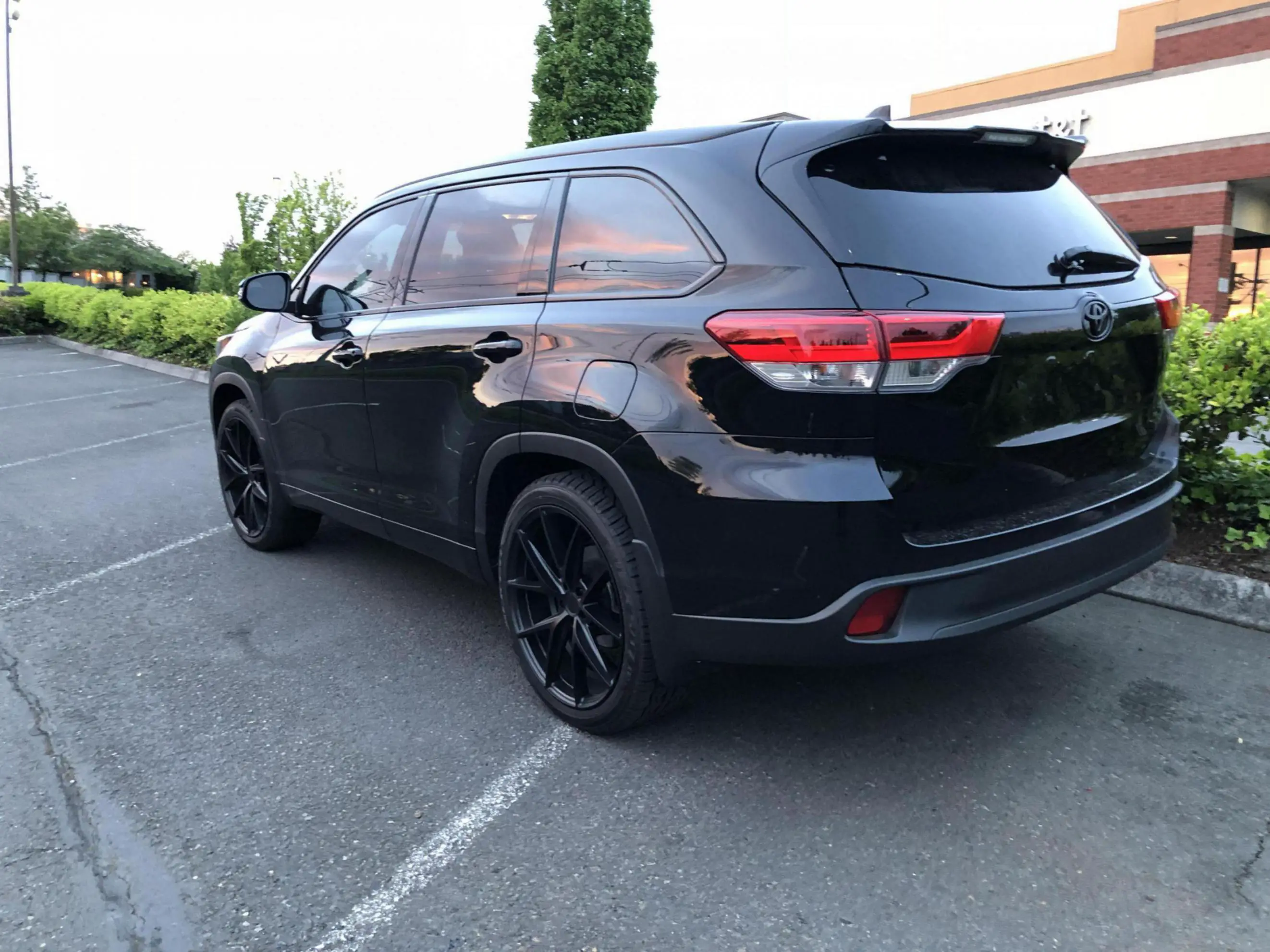Contents
1/2-inch (12mm)Moving wheels 1/2-inch outwards eliminates rubbing and clearance issues when installing aftermarket wheels. |
1-inch (25mm)A super-effective accessory to increase stability and give a noticeably aggressive stance. |
1.5-inch (40mm)By pushing out the wheels further out from the hub with 1.5-inch wheel spacers you gain in handling characteristics and get a catchy look. |
2-inch (50mm)Allow for significantly wider tires to improve road grip and traction when off-roading. |
2.5-inch (63mm) |
3-inch (75mm) |
Benefits of using wheel spacers on Toyota Highlander
From racecars to mid-size crossover SUVs, wheel spacers are a great option for a wide variety of vehicles. They are used to increase handling and stability by widening a vehicle’s track. Sometimes, car owners install them to give their cars an aggressive visual appeal. Other times, it’s to allow them to fit larger rotors, performance calipers, custom wheels, and other aftermarket parts. Wheel spacers allow your wheels to sit further away from the wheel hubs, hence, ensuring that you get enough clearance.
Choosing bolt pattern and thickness
Wheel spacers come in different sizes. To get a clear picture of the right thickness that fits your Toyota Highlander, you’ll need the hardware-store type of flat metal washers. These provide an inexpensive way of determining the right wheel spacer size. A box of 40 or 50 washers shouldn’t cost more than $6. If you’re the DIY type of person, you may already have these at home.
Ensure that their inner diameter allows them to fit onto your wheel studs/lug bolts. If your Highlander is fitted with wheel studs, start by placing the same number washers on each stud. Lace the wheel to see if you’ve achieved the needed clearance. If not, add or remove washers repeatedly as you test-fit your wheel. Ensure that you have an equal number of washers on all studs at all times.
Once you have enough clearance, measure the thickness of the washers from any one of the studs. This will be the thickness of your wheel spacers. If your car’s wheels are fitted using lug bolts, you’ll need to pass all the bolts through the wheel first. Add the washers onto the bolts before test-fitting the wheel. Do this repeatedly until you achieve adequate clearance.
Keep the wheel in a vertical position to prevent the washers from falling off. Add a washer every time you need more clearance and remove one whenever you need to cut back. When you achieve the desired results, measure the thickness of the washers. This represents the width of the wheel spacers that you’ll need.
How much wheel offset will my Highlander get?
To avoid interfering with your suspension geometry, it’s best not to install spacers that are too thick. Wheel spacers that are significantly large may increase the effort needed to steer your car. Your wheel offset will depend on the thickness of your wheel spacers.
Installing Wheel Spacers on Toyota Highlander
To install wheel spacers:
- Jack up your Toyota Highlander
- Unscrew the lug nuts to remove the wheel
- Place your wheel spacer and secure it firmly
- Re-install your wheels and use a torque wrench to tighten them.
Lower your vehicle and repeat the process for the other wheels.
Appearance: Thrusting the Toyota Highlander wheels out to expand the uplift and more splendid look.
Clearance: A great deal of custom-built Toyota Highlander wheels do without enough of clearance to line up with big brake kits.
Correction: The offset of the Toyota Highlander wheel build appears to be too high, leading to the wheels resting too far inward. This might make the tire to scrub on the inside Toyota Highlander caliper covers, or other components. Wheel spacers adjust the offset concern.
Handling: by forcing your Toyota Highlander wheels further away from each other, this simple change can reinforce the Toyota Highlander car with more lateral stability and improved cornering.
